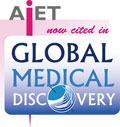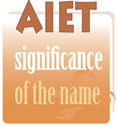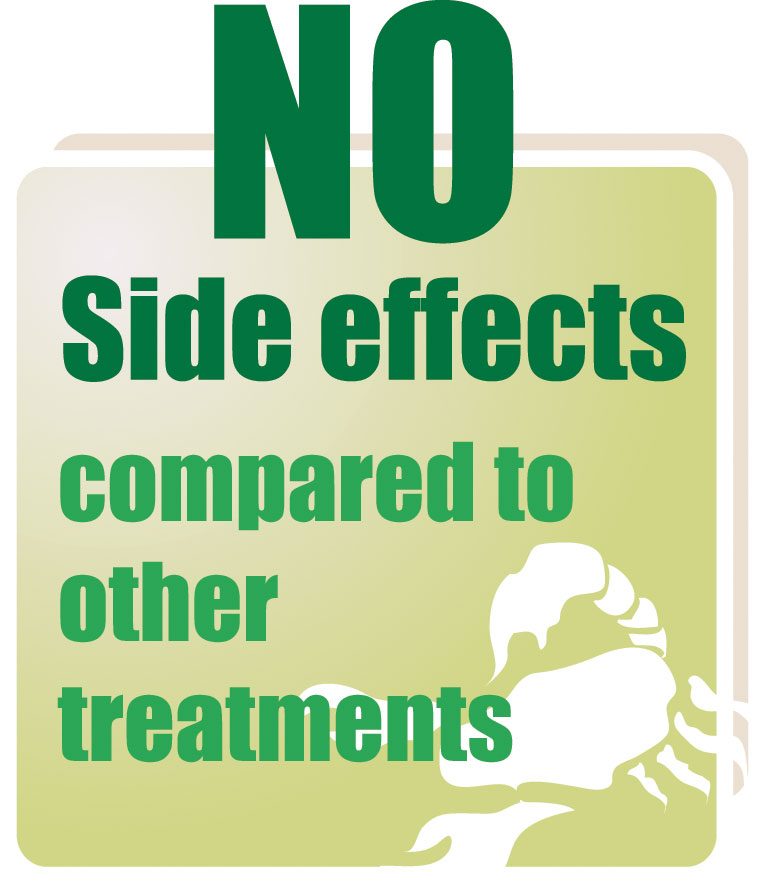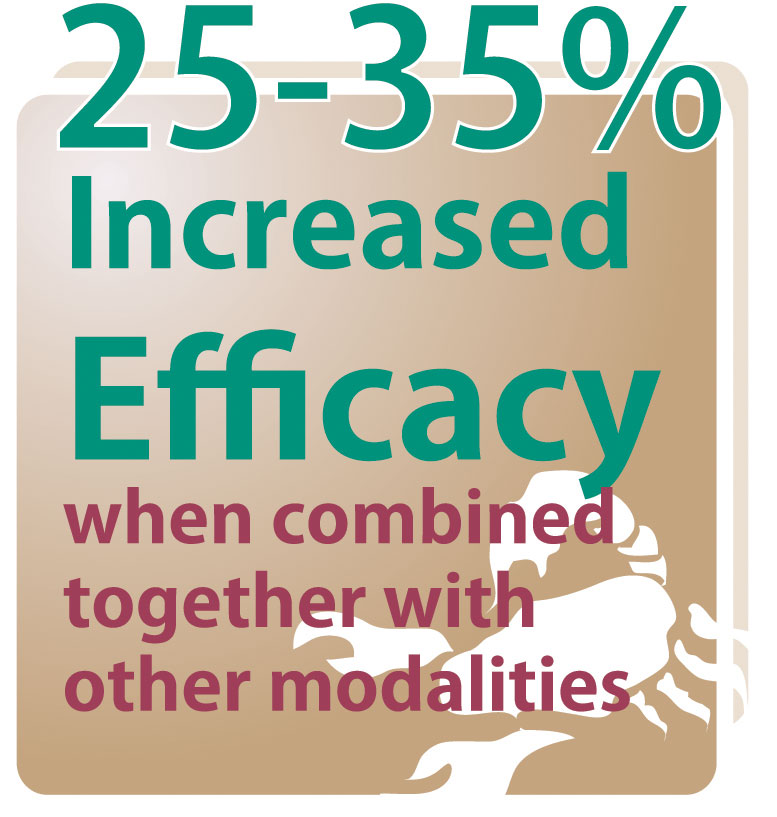Sample menu:
The antigen sensing of Viruses and cancer cells by the NK cells is by similar mechanisms. Evidences are piling up that The NK cells and CTLs which are the major weapons used in AIET against cancer are also effective against viruses and few other conditions as described below:
Human Immuno deficiency Virus (HIV):
Natural killer cells in addition to their non-specific antigen killing of tumour cells and viruses also work by another mechanism known as Antibody-Dependent Cell-Mediated Cytotoxicity (ADCC) in which the NK cells destroys the target cell that has been bound by specific antibodies. The antibodies bind through their variable antigen-binding sites to the viral antigen on the surface of the virus-infected cells and by crystallizable fragments (Fc) to CD16 on NK cells. This triggers the cytolytic functions of NK cells and results in killing of the virus-infected cells and secretion of cytokines and chemokines from NK cells (1).
Based on this mechanism it has been identified that HIV-infected cells bound by anti-gp120 antibodies are destroyed by NK cells (1). In another study it was demonstrated that freshly isolated NK cells preloaded with an HIV gp120-specific chimeric IgG1/IgA fusion protein efficiently lysed the HIV-infected target cells and NK cells pre-armed in this manner retained the capacity to kill targets over an extended period of time(2.. There are several studies which has proved the killing of HIV infected cells by NK cells (3, 4,5,6,7)
Influenza:
In view of the periodic upsurges of the global pandemics the swine(H1N1) and avian(H5N1) influenza , it has been shown that NKp46 , a receptor which is associated with cytotoxicity of NK cells can recognize the hemagglutinins of H1N1and H5 and that this recognition leads to virus killing both in vitro and in vivo (8)
Hepatitis C:
Hepatitis C virus (HCV) plays a major role in development of chronic liver disease including cirrhosis and Hepatocellular carcinoma. The HCV uses complex and unique mechanisms to evade innate and adaptive immune responses and to establish persistent infection and chronic hepatitis. A study by Li et al (9) showed that NK cells are capable of secreting IFN-? to powerfully suppress HCV RNA expression further confirming the role of NK cells in the host innate immune defense against HCV infection.
Epstein Barr Virus(EBV):
EBV may be related to the development of malignancies such as Hodgkin’s disease and nasopharyngeal carcinomas. In a clinical study, 39 patients considered to be at high risk for EBV-induced lymphoma received 2 to 4 intravenous infusions of donor-derived EBV-specific T lymphocytes. Six patients who had greatly increased amounts of EBV-DNA on study entry indicating uncontrolled EBV replication showed 2 to 4 log decreases in viral DNA levels within 2 to 3 weeks after infusion and none developed lymphoma, confirming the antiviral activity of the donor-derived cells. Importantly there were no toxic side effects after the therapy (10). In another study a 2-year-old girl with Hurler's syndrome who developed multiple central nervous system (CNS) EBV LPD lesions 1 year after unrelated donor hematopoietic stem cell transplantation was given low-dose oral hydroxyurea. The patient improved clinically, with a decrease in size of multiple EBV LPD brain lesions. Subsequently EBV-specific cytotoxic T-cell lymphocytes were administered and the patient continued to do well (11)
Chronic Fatigue Syndrome(CFS):
Chronic Fatigue syndrome is a complex disorder with non-specific and varied etiologies including genetic predisposition, infection by viruses and pathogenic bacteria, hypothalamic-pituitary-adrenal axis abnormalities, immune dysfunction as well as psychological and psychosocial factors. It has been known for years that the most consistent immunological abnormality detected among these patients, when compared with normal controls is low natural killer (NK) cell cytotoxicity (12) and there is positive correlation between low levels of NK cell activity and severity of the disease (13).
Further, there is a predominance of a Th2-type response which favors the function of B lymphocytes or the humoral arm of immunity over Th1 response which favors the function of macrophages and natural killer cells. Predominance of a Th2-type response has been found to be consistent with pathologies, such as autoimmunity and atopy (14) which is unfavourable. Hence immunotherapeutic approaches that help in either induction of Th1 predominance or strike a balance between Th1 and Th2 response or enhance NK cell activity by either injection of T lymphocytes, using food supplements that enhance natural killer activity, immunoglobulin therapy and injection of Dialysable leucocyte extract have been tried by various groups with varied success (15, 16,17).
In addition to the above mentioned conditions, Imai et al (18) have found after an 11 year follow-up of 3625 volunteers that the NK cell profile of cancer victims is significantly lower than their peers without cancer. This finding could be the basis for a study of long term effects of intermittent AIET in people with cancer history in their family and also with people who undergo stress related decrease of NK cell profile.
Thus individuals with lower immunity, those susceptible to cancer and viral infections, those under stress, those with diagnosis of chronic fatigue syndrome and those suffering from above mentioned viral infections can undergo Autologous immune Enhancement therapy (AIET) in addition to the other therapies they are undergoing such as antiviral therapies and supplementary therapies to enhance their immunity for effective response against the diseases.
References:
1. Terunuma H, Deng X, Dewan Z, Fujimoto S, Yamamoto N. Potential role of NK cells in the induction of immune responses: implications for NK cell-based immunotherapy for cancers and viral infections. Int Rev Immunol. 2008;27(3):93-110.
2. Gupta N, Arthos J, Khazanie P, Steenbeke TD, Censoplano NM, Chung EA, Cruz CC, Chaikin MA, Daucher M, Kottilil S, Mavilio D, Schuck P, Sun PD, Rabin RL, Radaev S, Van Ryk D, Cicala C, Fauci AS. Targeted lysis of HIV-infected cells by natural killer cells armed and triggered by a recombinant immunoglobulin fusion protein: implications for immunotherapy. Virology. 2005 Feb 20;332(2):491-7.
3. Zhang T, Li Y, Wang YJ, Wang X, Young M, Douglas SD, Ho WZ. Natural killer cell inhibits human immunodeficiency virus replication in chronically infected immune cells. Antiviral Res. 2007 Feb;73(2):132-9.
4. Iannello A, Debbeche O, Samarani S, Ahmad A.Antiviral NK cell responses in HIV infection: II. viral strategies for evasion and lessons for immunotherapy and vaccination. J Leukoc Biol. 2008 ;84(1):27-49.
5. Forthal DN, Landucci G, Daar ES. Antibody from patients with acute human immunodeficiency virus (HIV) infection inhibits primary strains of HIV type 1 in the presence of natural-killer effector cells. J Virol. 2001 Aug;75(15):6953-61.
6. Zhang D, Shankar P, Xu Z, Harnisch B, Chen G, Lange C, Lee SJ, Valdez H, Lederman MM, Lieberman J. Most antiviral CD8 T cells during chronic viral infection do not express high levels of perforin and are not directly cytotoxic. Blood. 2003 Jan 1;101(1):226-35.
7. Kottilil S, Chun TW, Moir S, Liu S, McLaughlin M, Hallahan CW, Maldarelli F, Corey L, Fauci AS. Innate immunity in human immunodeficiency virus infection: effect of viremia on natural killer cell function. J Infect Dis. 2003 Apr 1;187(7):1038-45
8. Achdout H, Meningher T, Hirsh S, Glasner A, Bar-On Y, Gur C, Porgador A,Mendelson M, Mandelboim M, Mandelboim O. Killing of avian and Swine influenza virus by natural killer cells. J Virol. 2010 Apr;84(8):3993-4001
9. Li Y, Zhang T, Ho C, Orange JS, Douglas SD, Ho WZ. Natural killer cell inhibit hepatitis C virus expression. J Leukoc Biol. 2004 Dec;76(6):1171-9
10. Rooney CM, Smith CA, Ng CY, Loftin SK, Sixbey JW, Gan Y, Srivastava DK, Bowman LC, Krance RA, Brenner MK, Heslop HE. Infusion of cytotoxic T cells for the prevention and treatment of Epstein-Barr virus-induced lymphoma in allogeneic transplant recipients. Blood. 1998 Sep 1;92(5):1549-55
11. Pakakasama S, Eames GM, Morriss MC, Huls MH, Rooney CM, Heslop HE, Krance RA. Treatment of Epstein-Barr virus lymphoproliferative disease after hematopoieticstem-cell transplantation with hydroxyurea and cytotoxic T-cell lymphocytes. Transplantation. 2004 Sep 15;78(5):755-7
12. Klimas NG, Salvato FR, Morgan R, Fletcher MA. Immunologic abnormalities in chronic fatigue syndrome. J Clin Microbiol. 1990 Jun;28(6):1403-10.
13. Ojo-Amaize EA, Conley EJ, Peter JB. Decreased natural killer cell activity is associated with severity of chronic fatigue immune dysfunction syndrome. Clin Infect Dis. 1994 Jan;18 Suppl 1:S157-9
14. Roberto Patarca-Montero, Nancy G. Klimas, and Mary Ann Fletcher.Immunotherapy of Chronic Fatigue Syndrome: Therapeutic Interventions Aimed at Modulating the Thl/Th2 Cytokine Expression Balance. Journal of Chronic Fatigue Syndrome.2001; Vol. 8(1)
15. Savoldo B, Huls MH, Liu Z, Okamura T, Volk HD, Reinke P, Sabat R, Babel N, Jones JF, Webster-Cyriaque J, Gee AP, Brenner MK, Heslop HE, Rooney CM. Autologous Epstein-Barr virus (EBV)-specific cytotoxic T cells for the treatment of persistent active EBV infection. Blood. 2002 Dec 1;100(12):4059-66
16. McDermott C, Richards SC, Thomas PW, Montgomery J, Lewith G. A placebo-controlled, double-blind, randomized controlled trial of a natural killer cell stimulant (BioBran MGN-3) in chronic fatigue syndrome. QJM. 2006 Jul;99(7):461-8.
17. Reid S, Chalder T, Cleare A, Hotopf M, Wessely S. Chronic fatigue syndrome. Clin Evid (Online). 2011 May 26
18. Imai K, Matsuyama S, Miyake S, Suga K, Nakachi K.Natural cytotoxic activity of peripheral-blood lymphocytes and cancer incidence an 11-year follow-up study of a general population.Lancet. 2000





